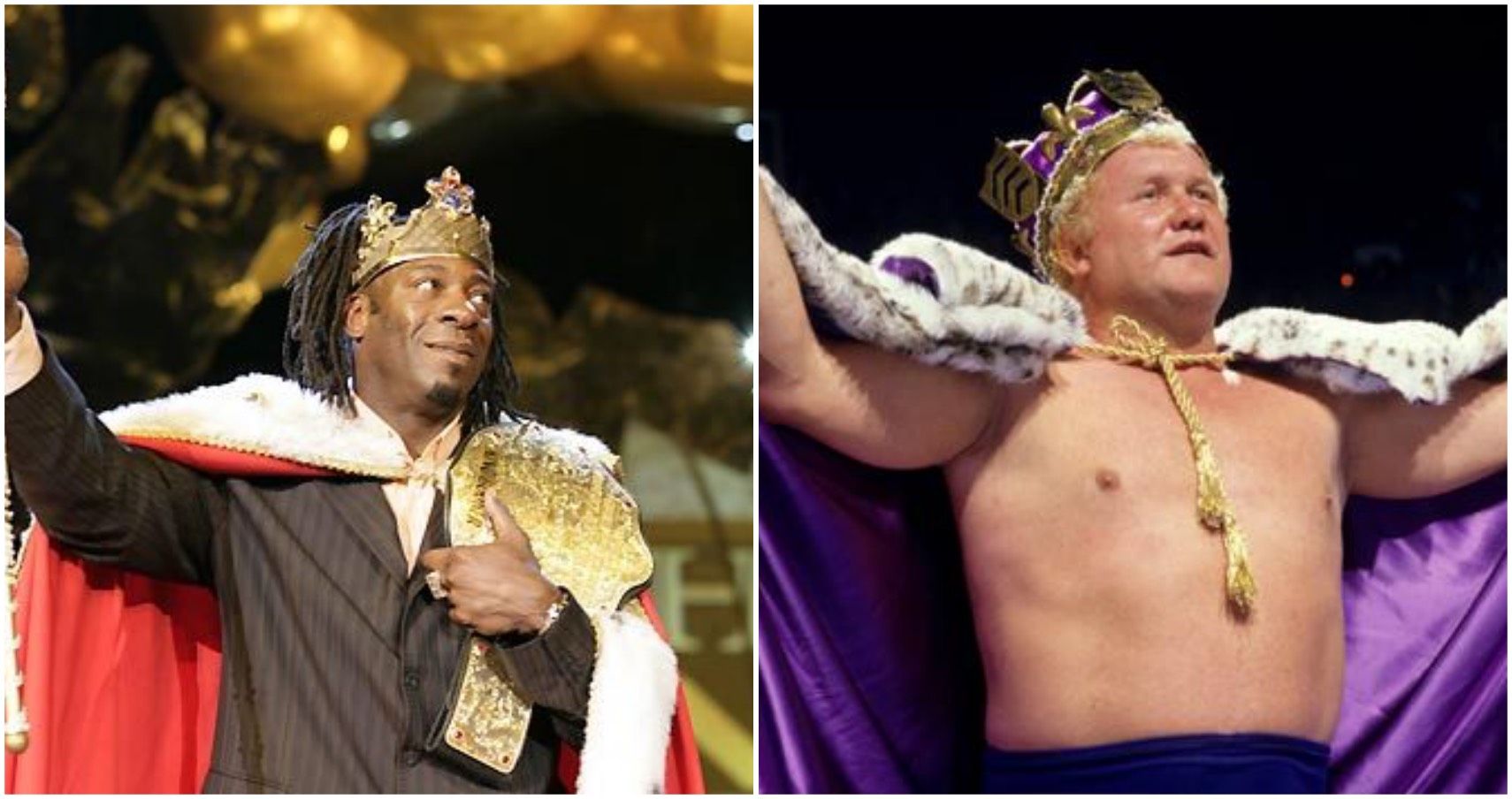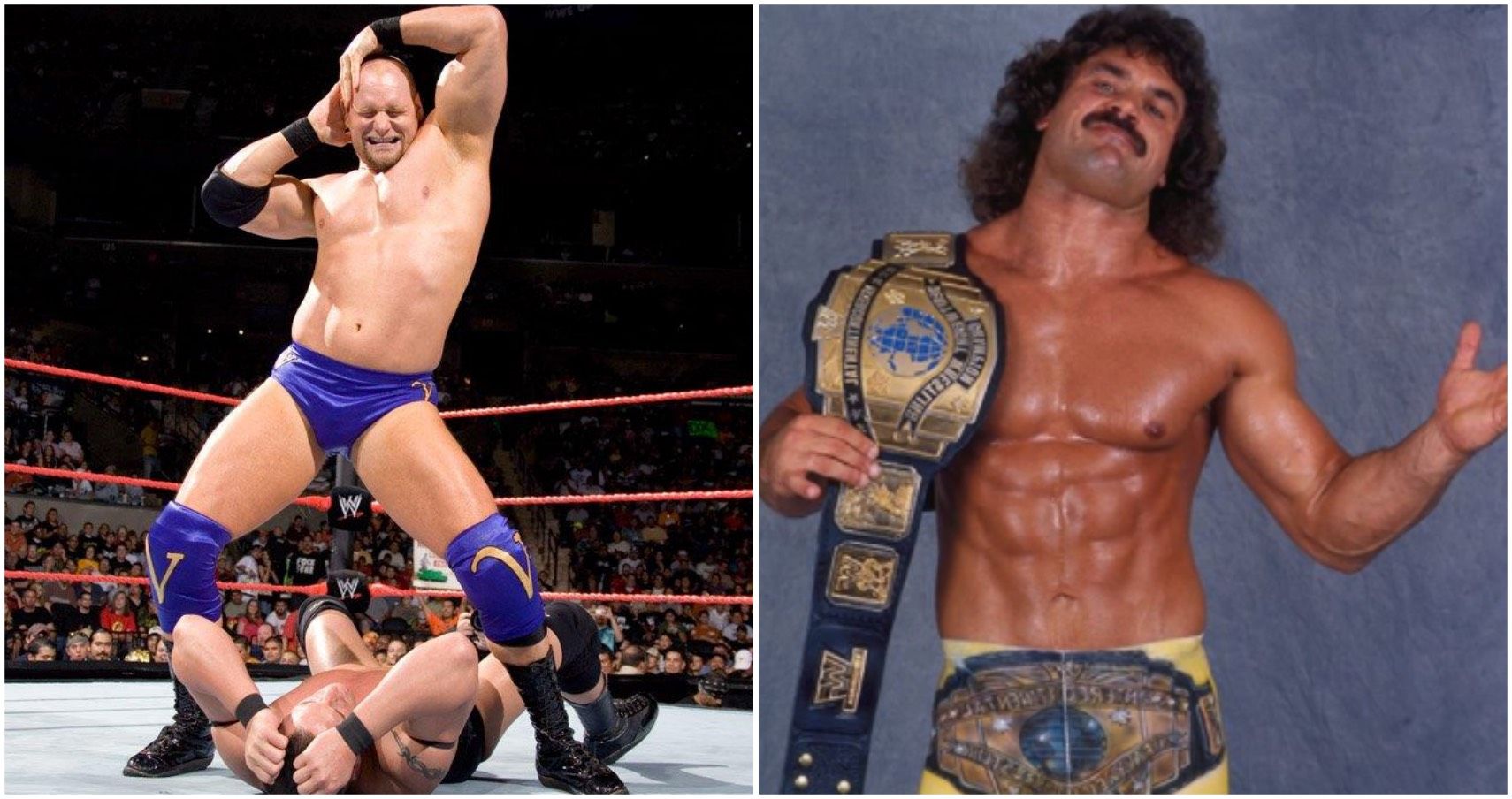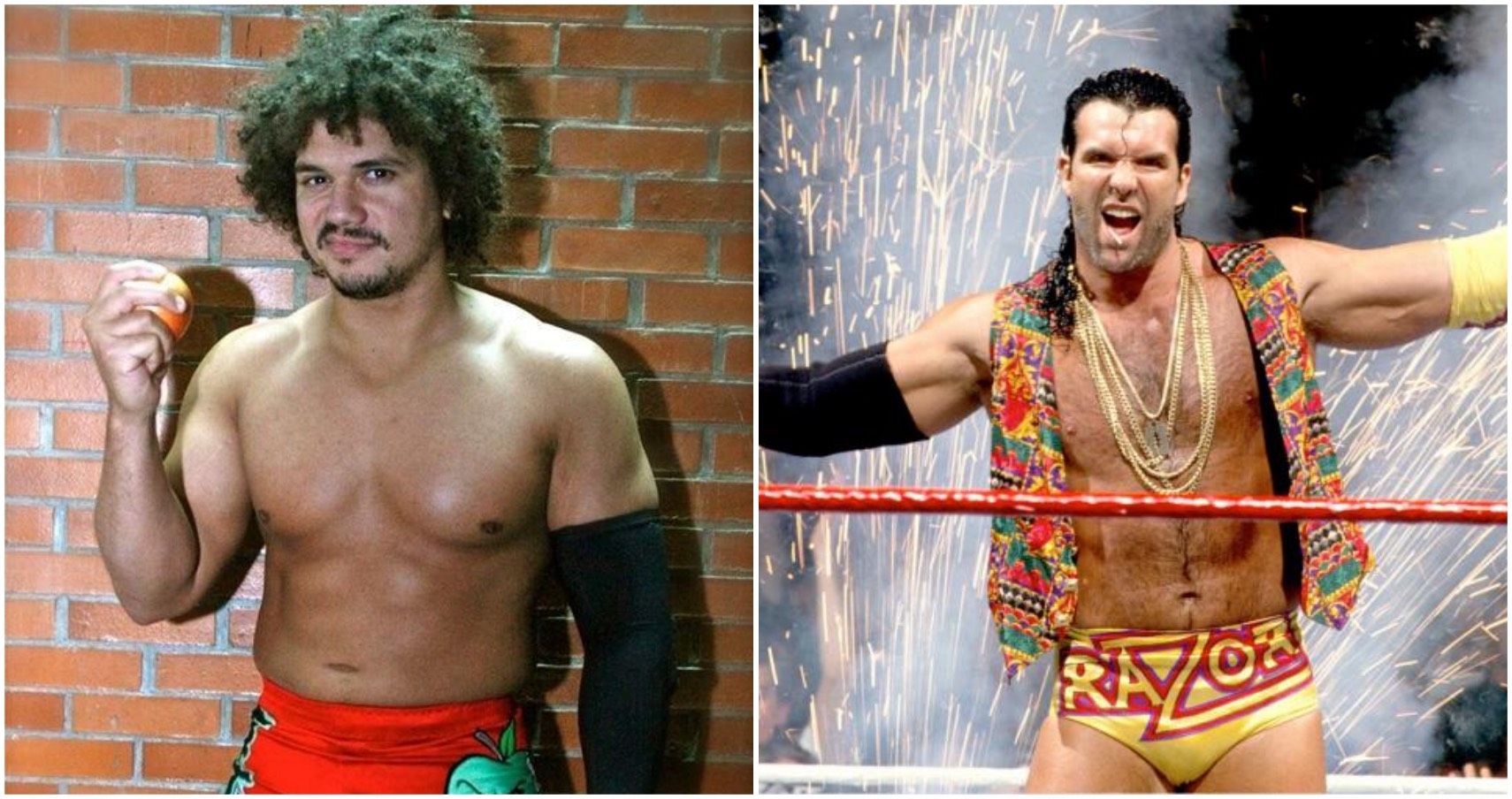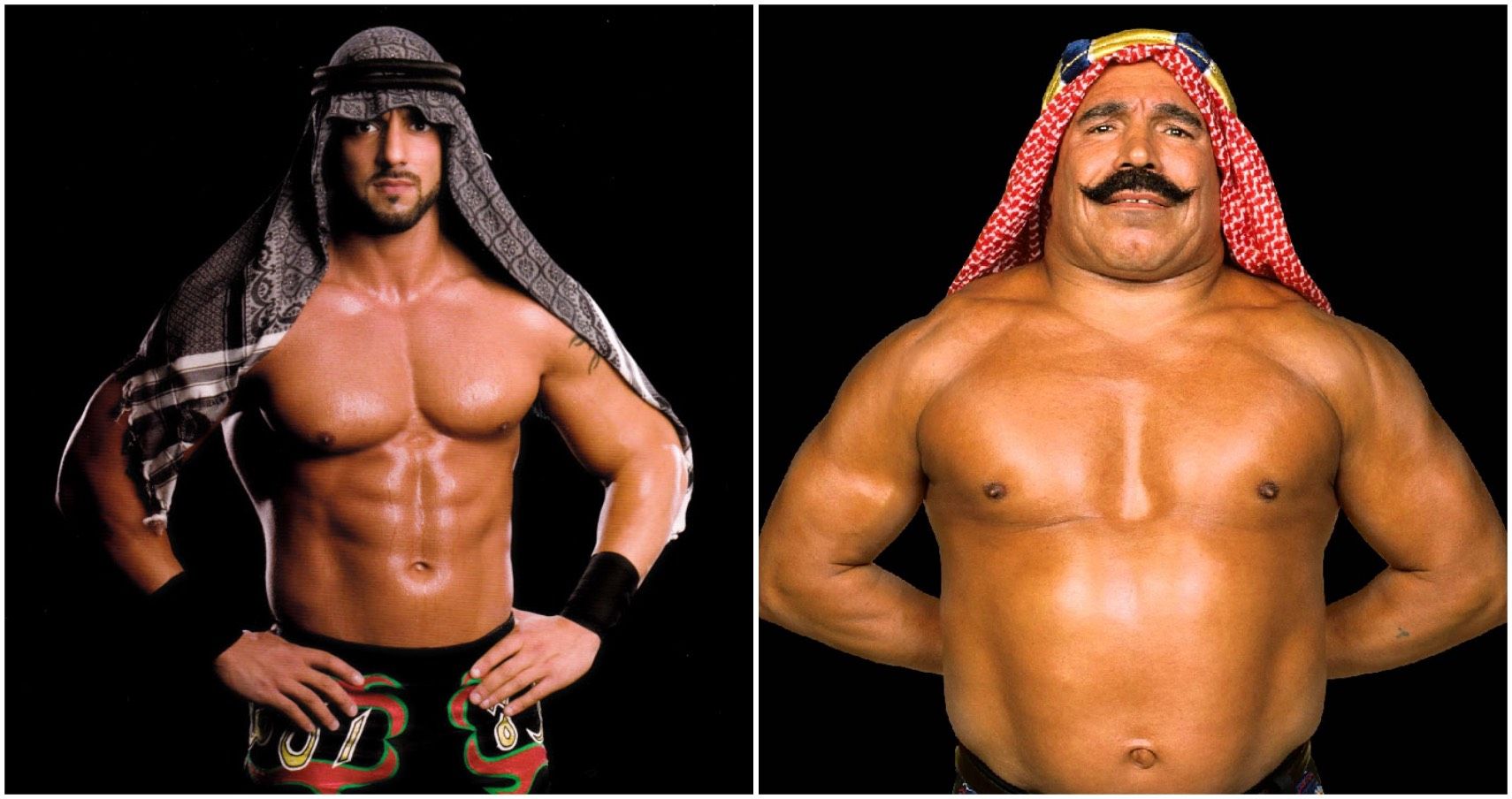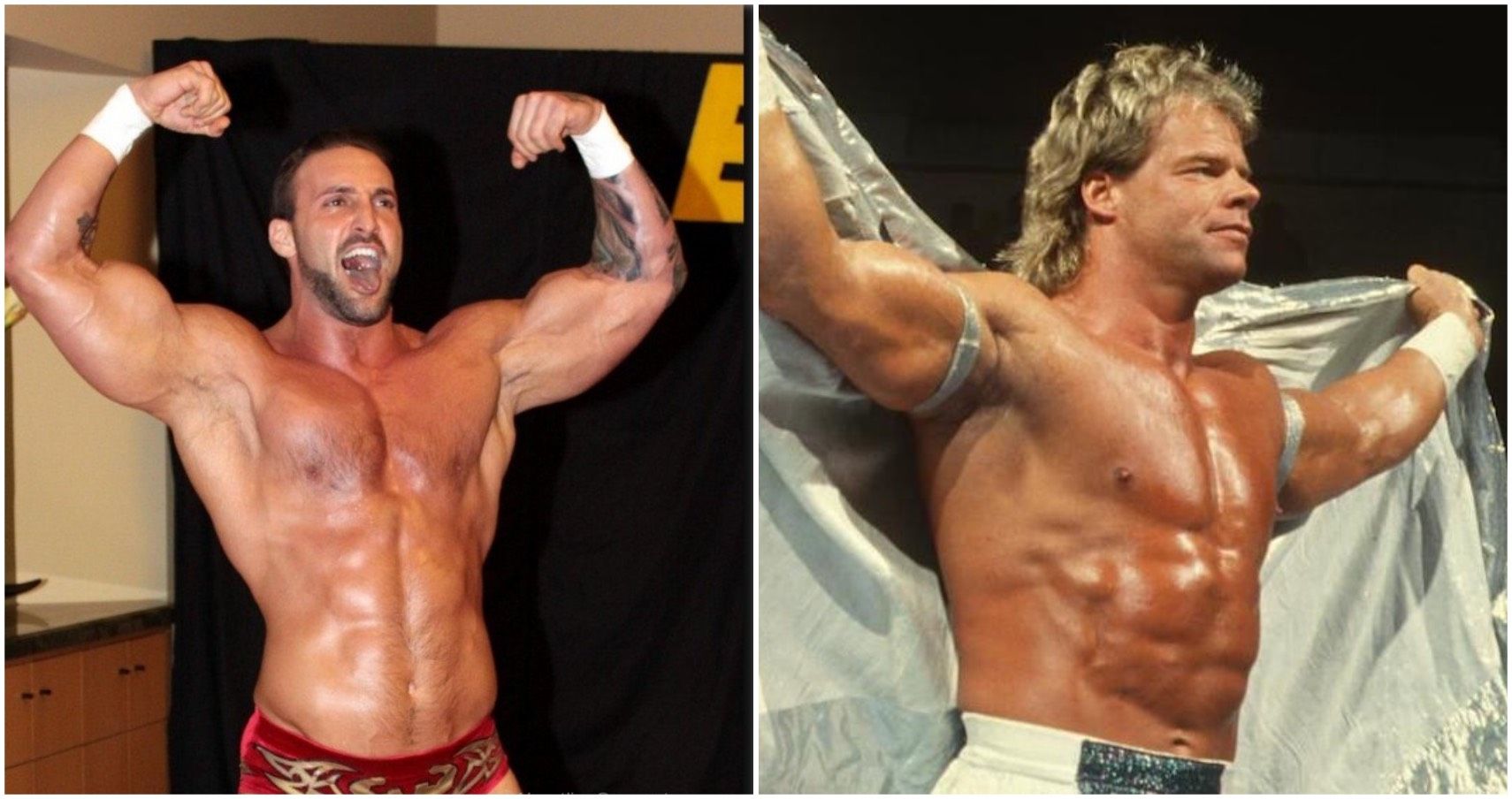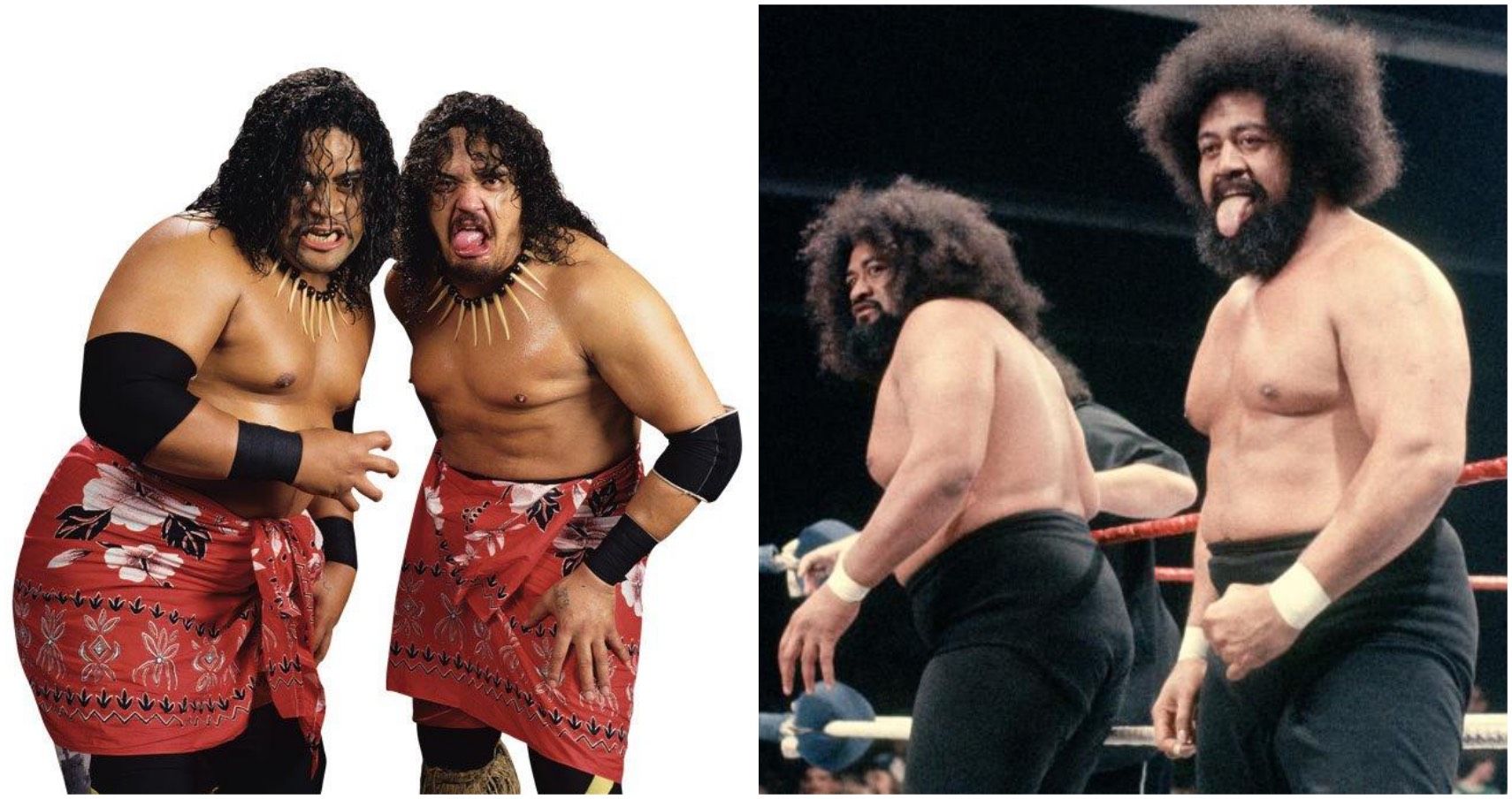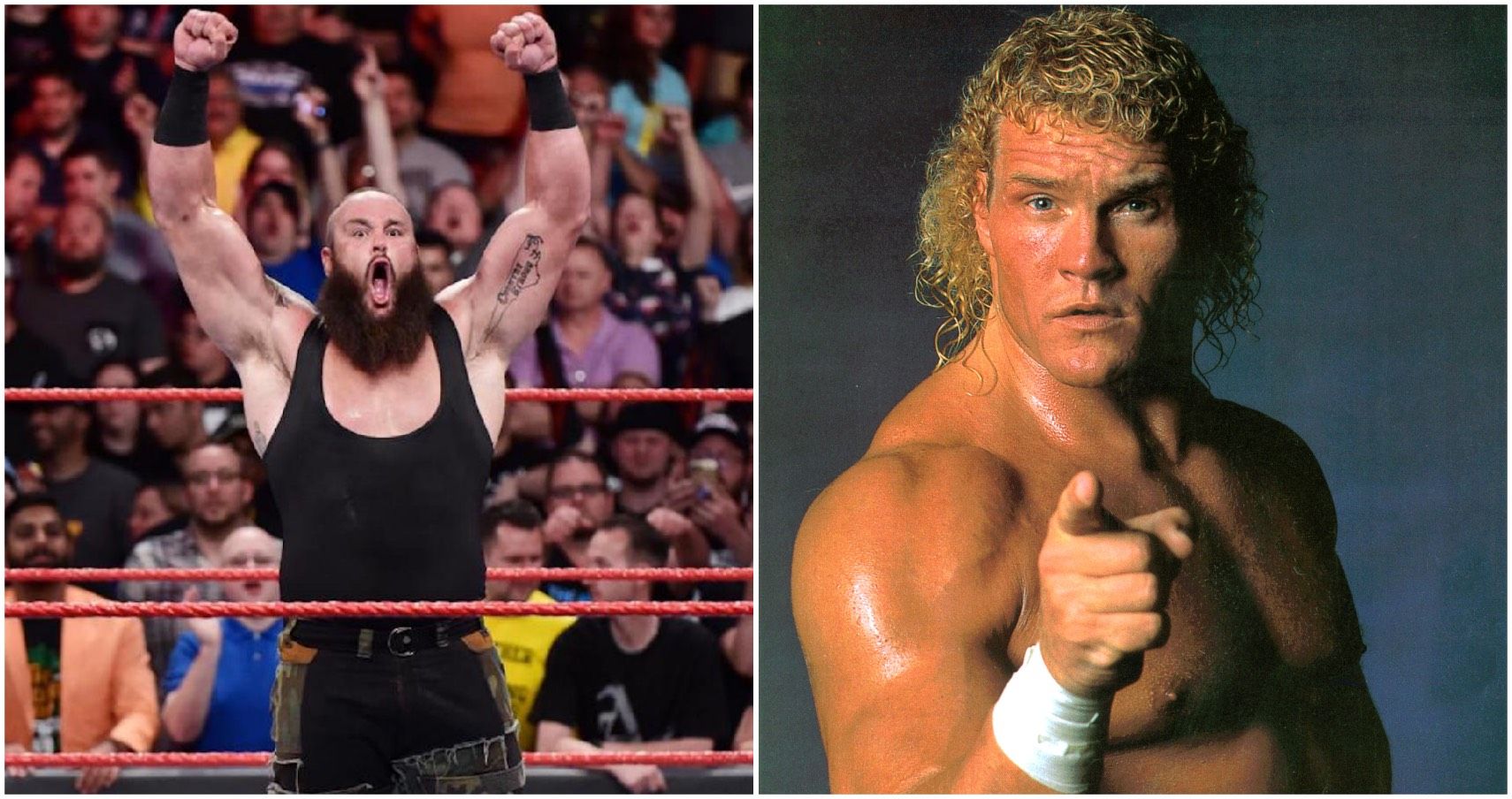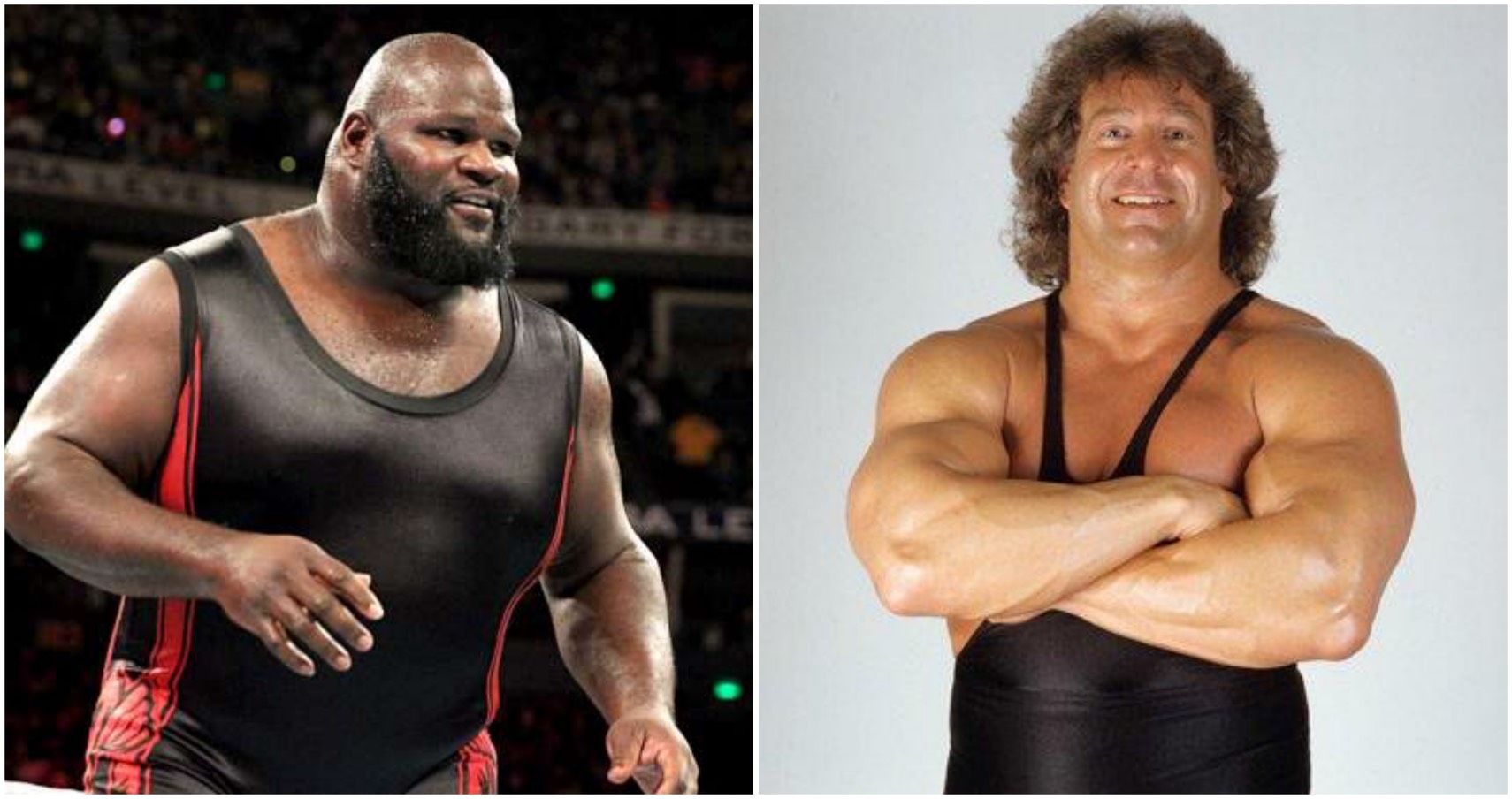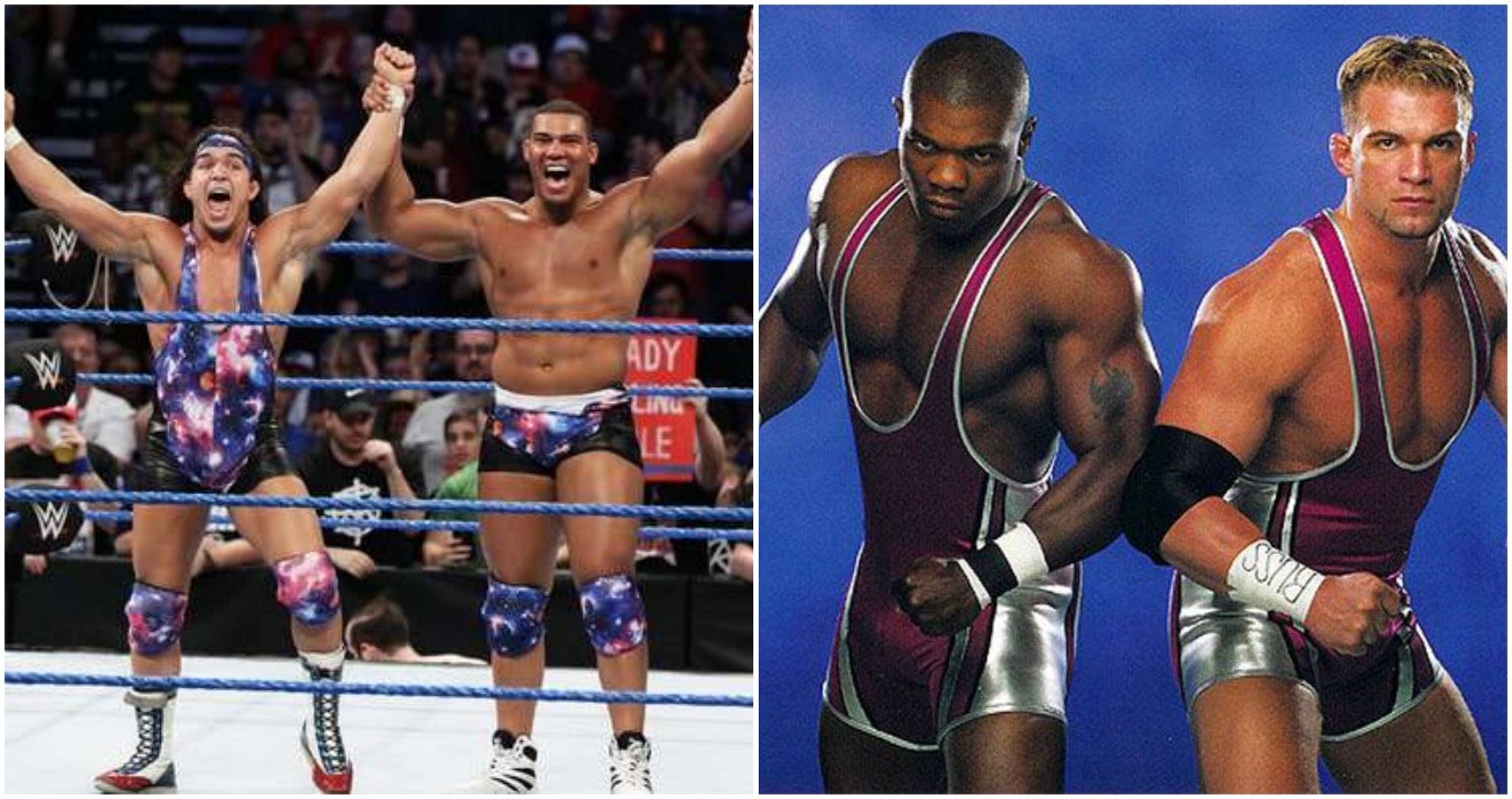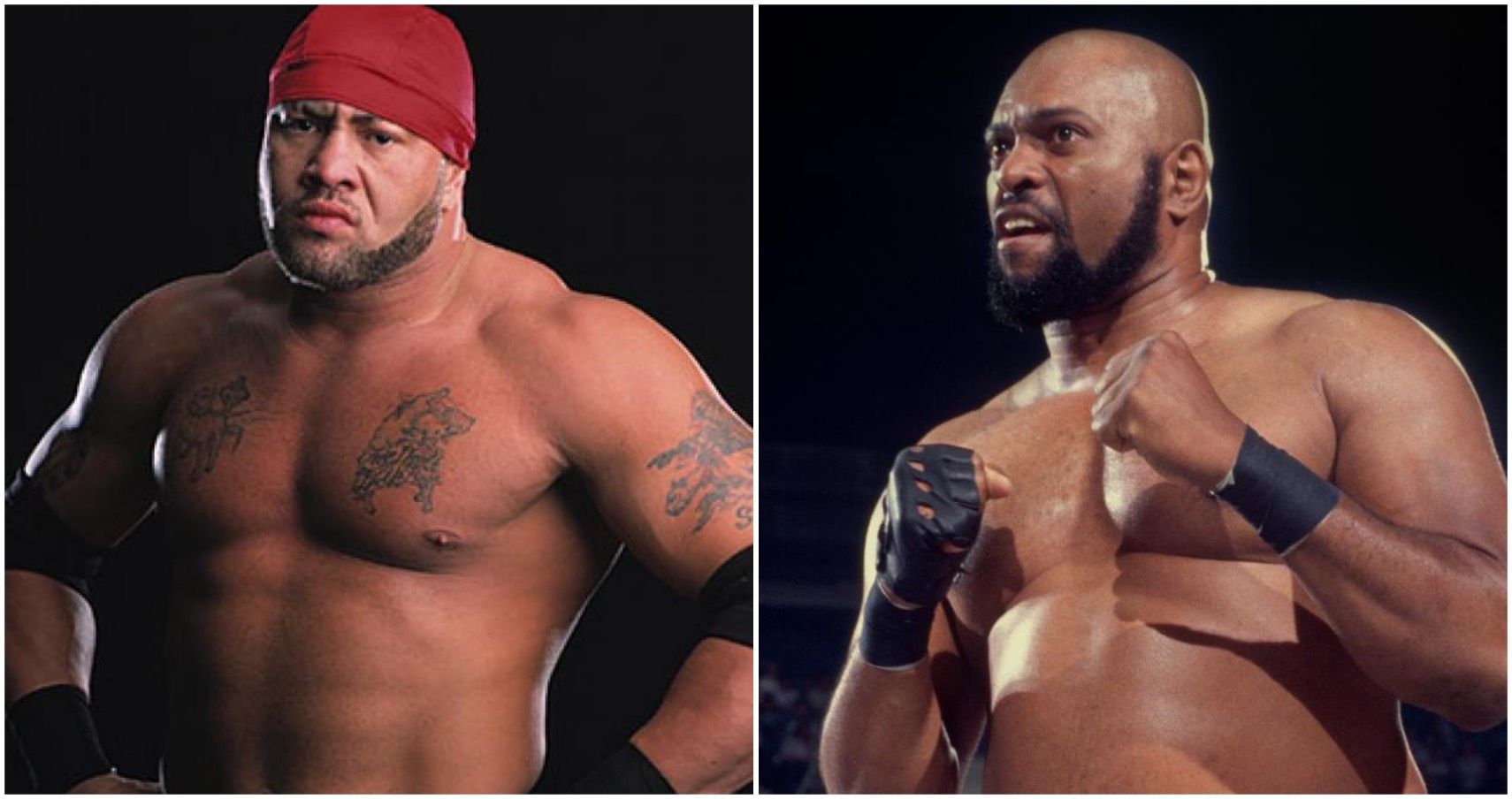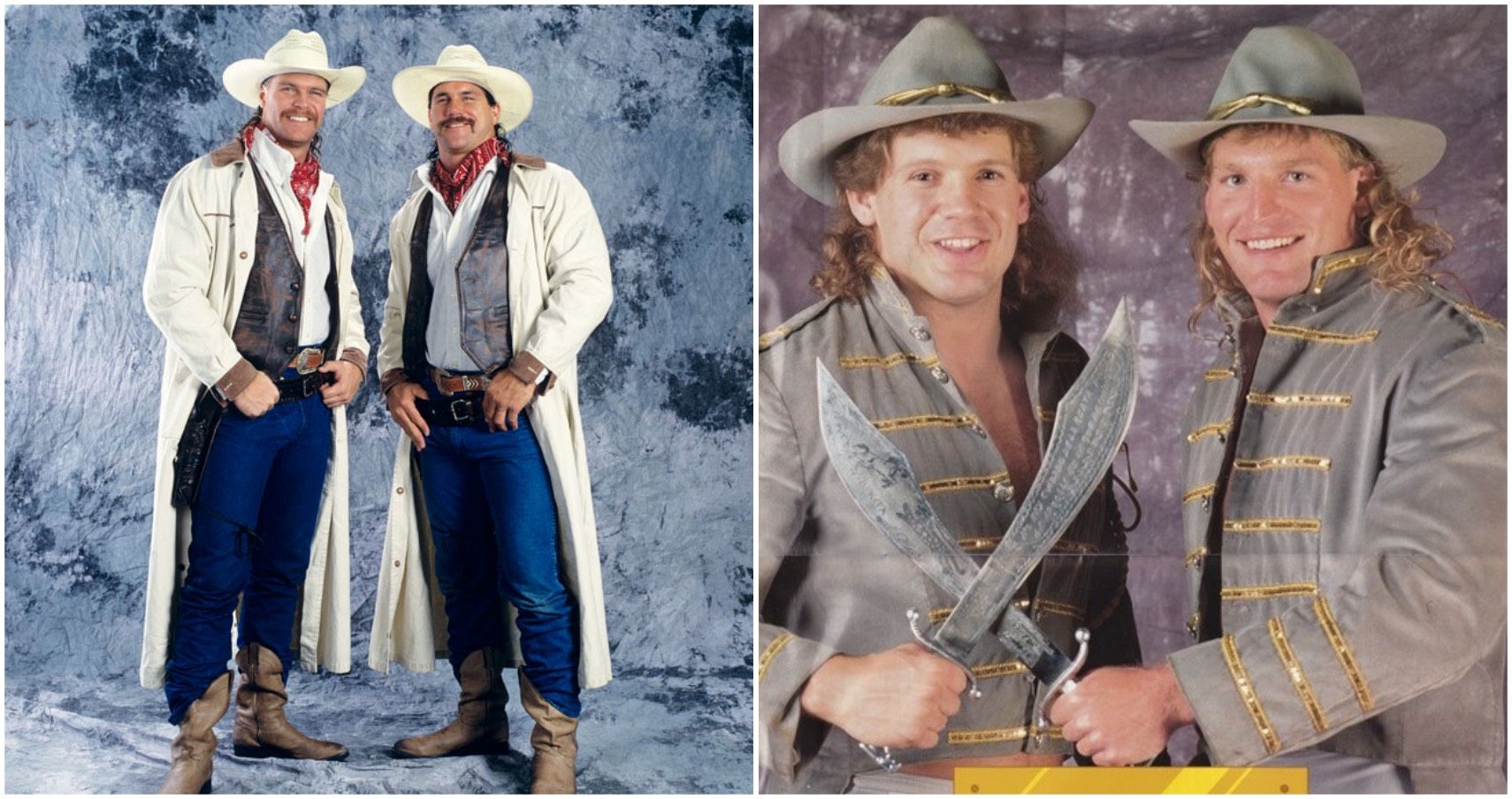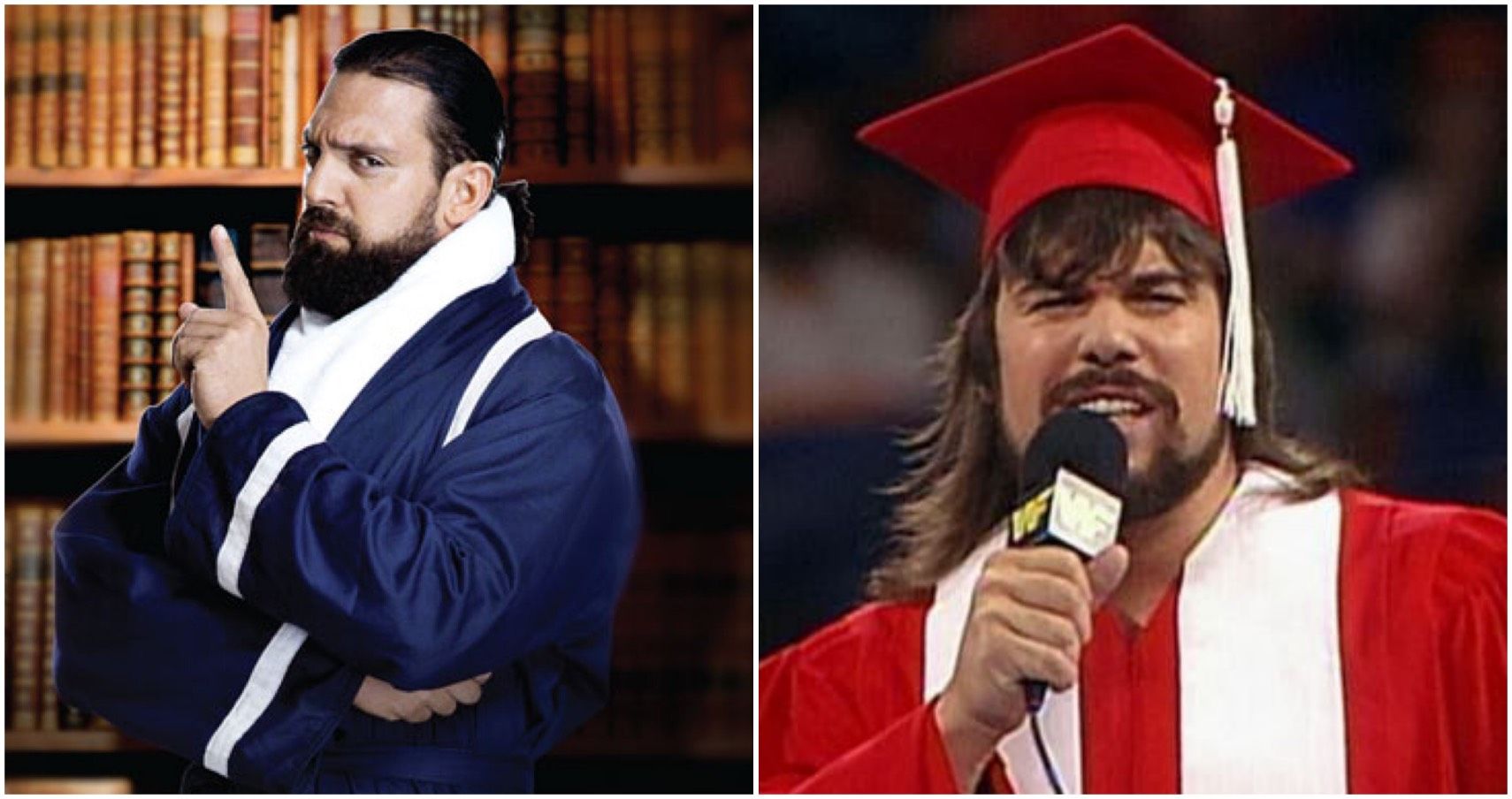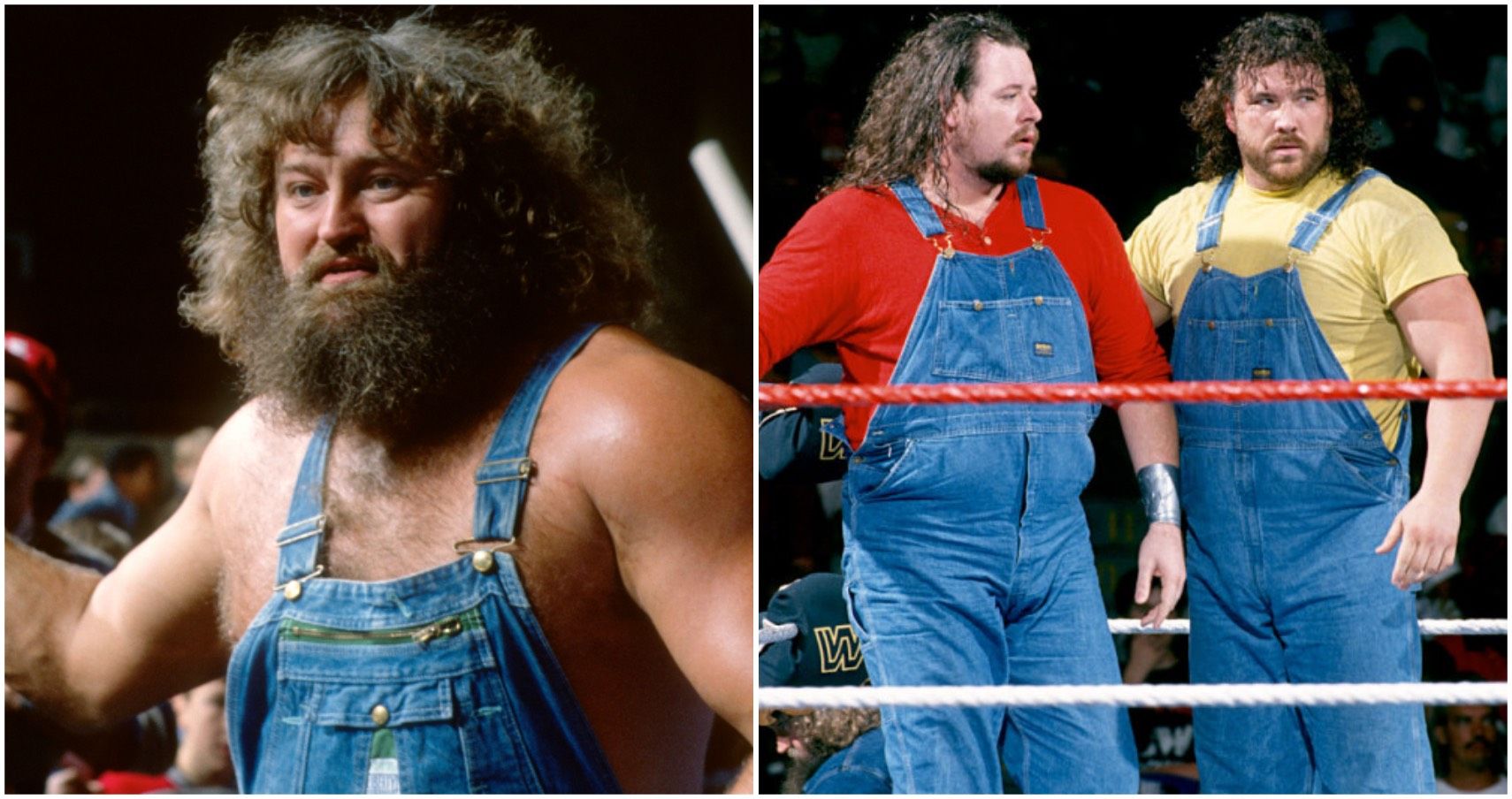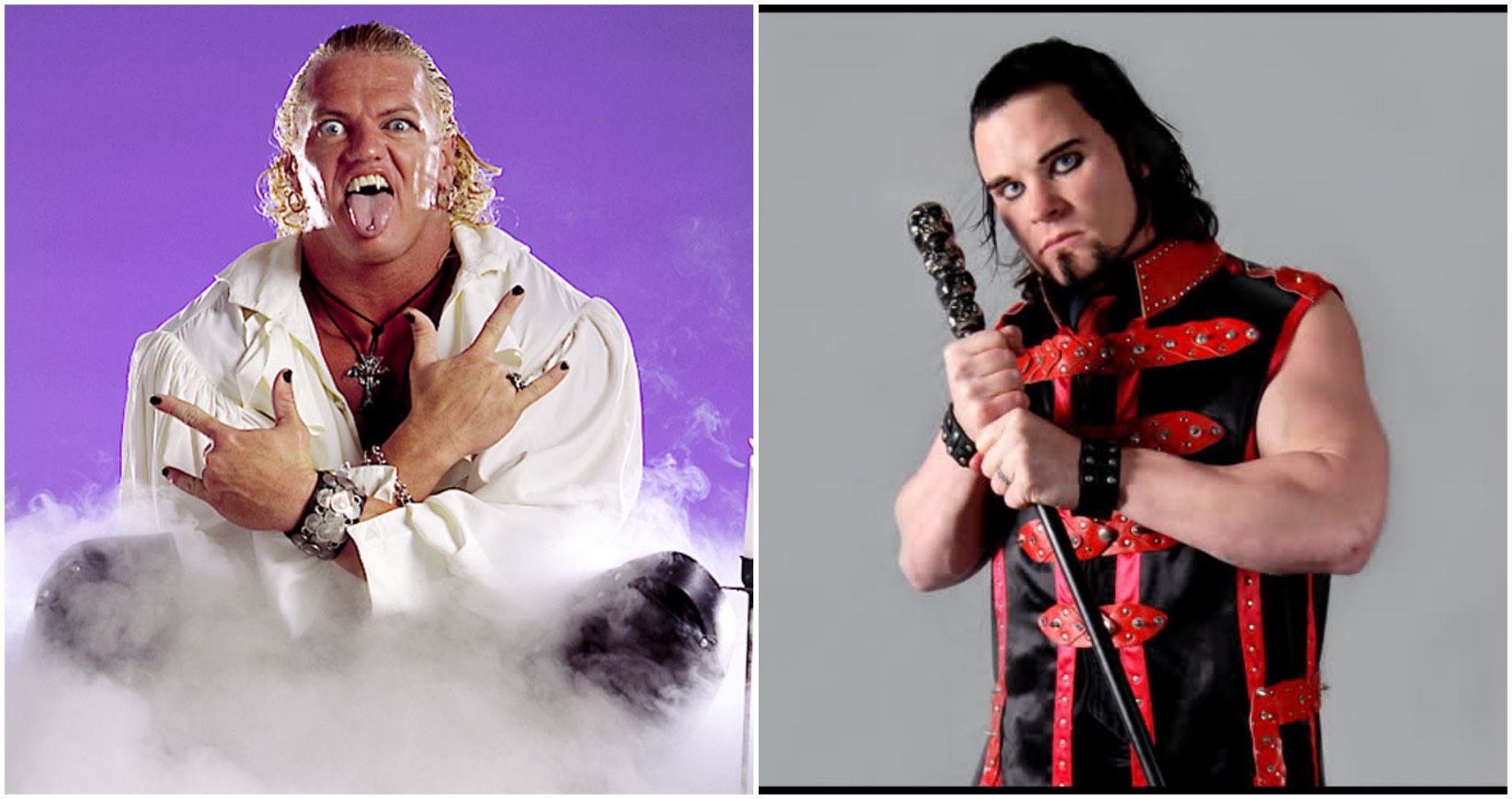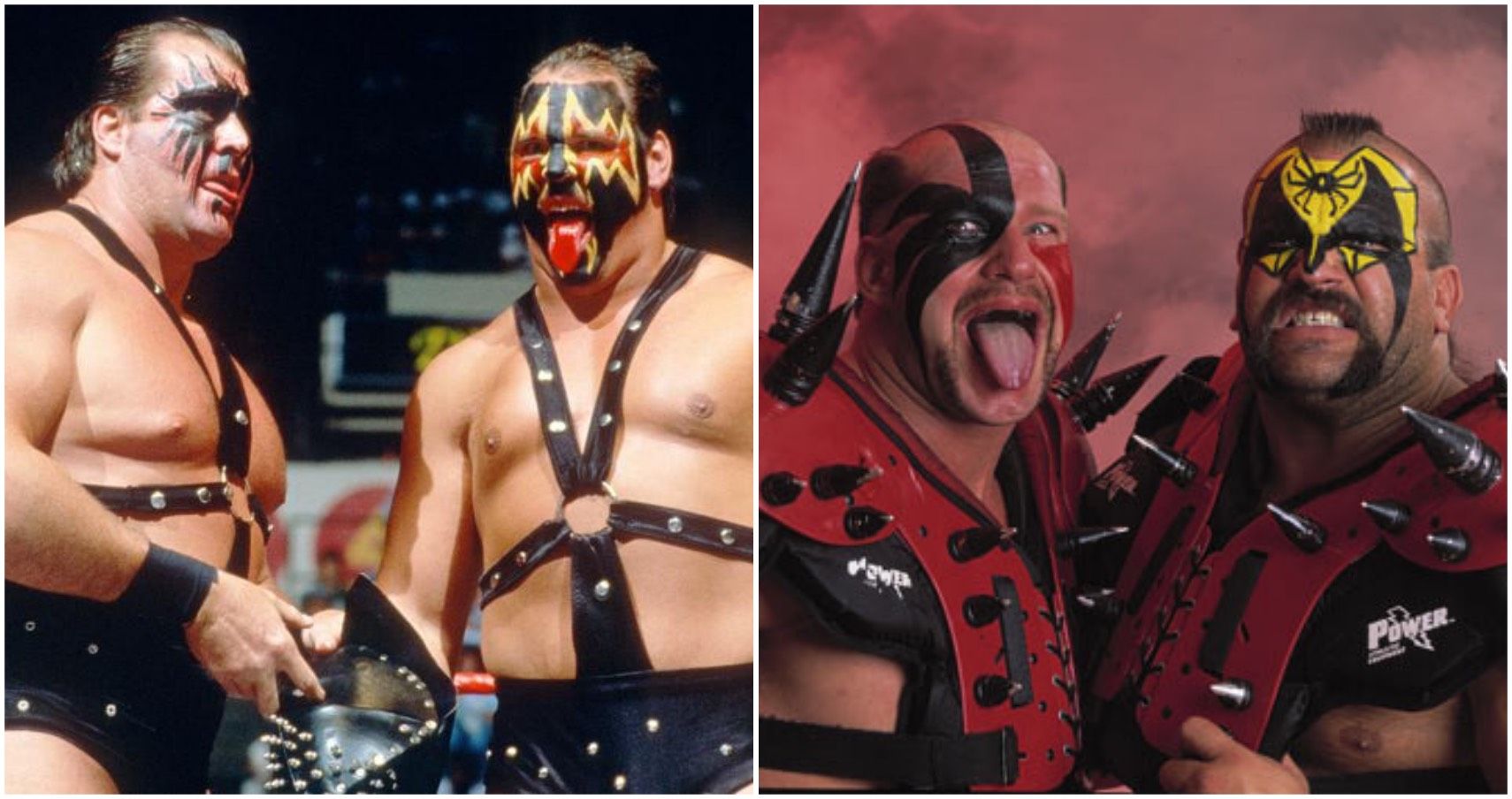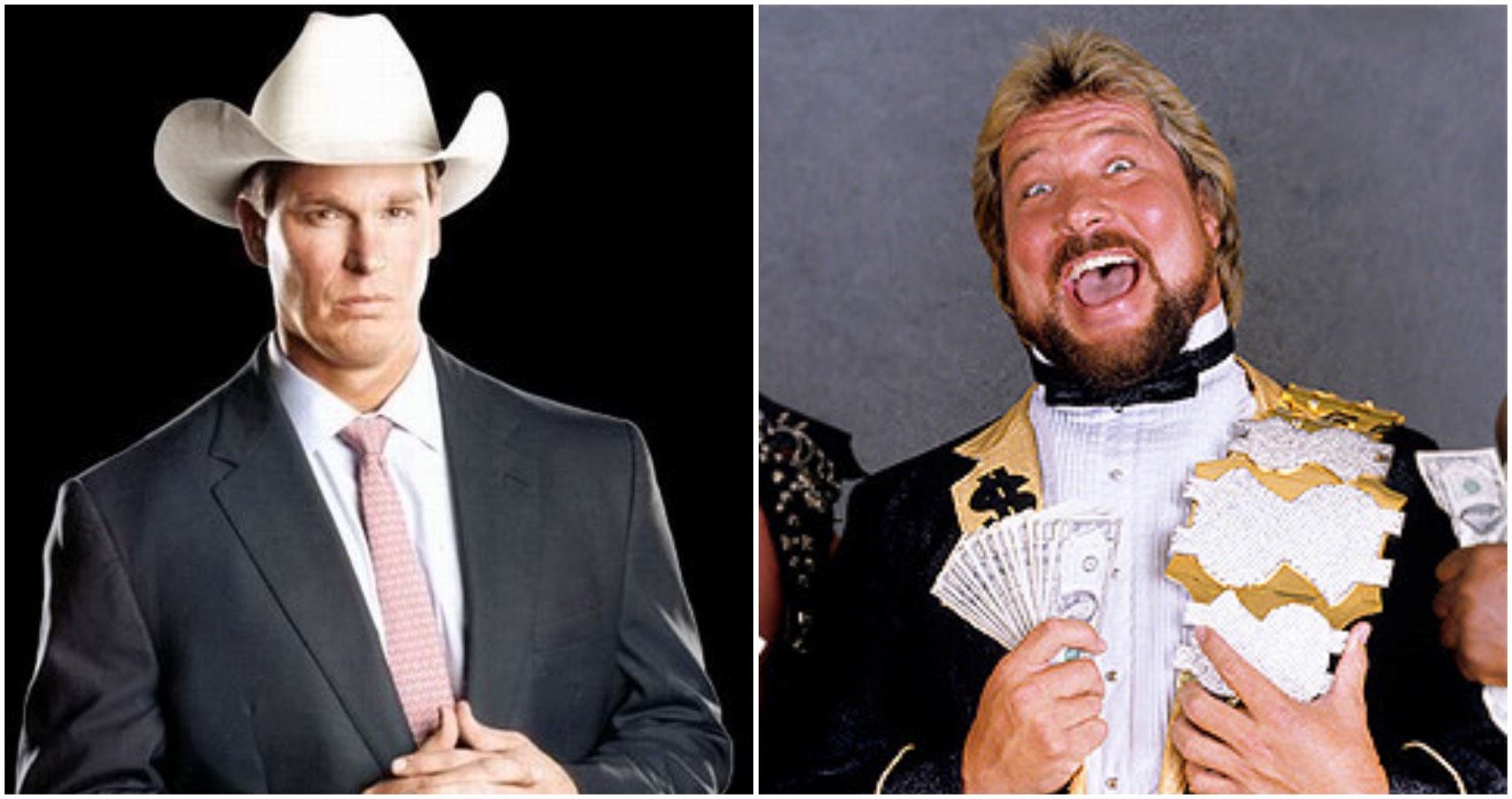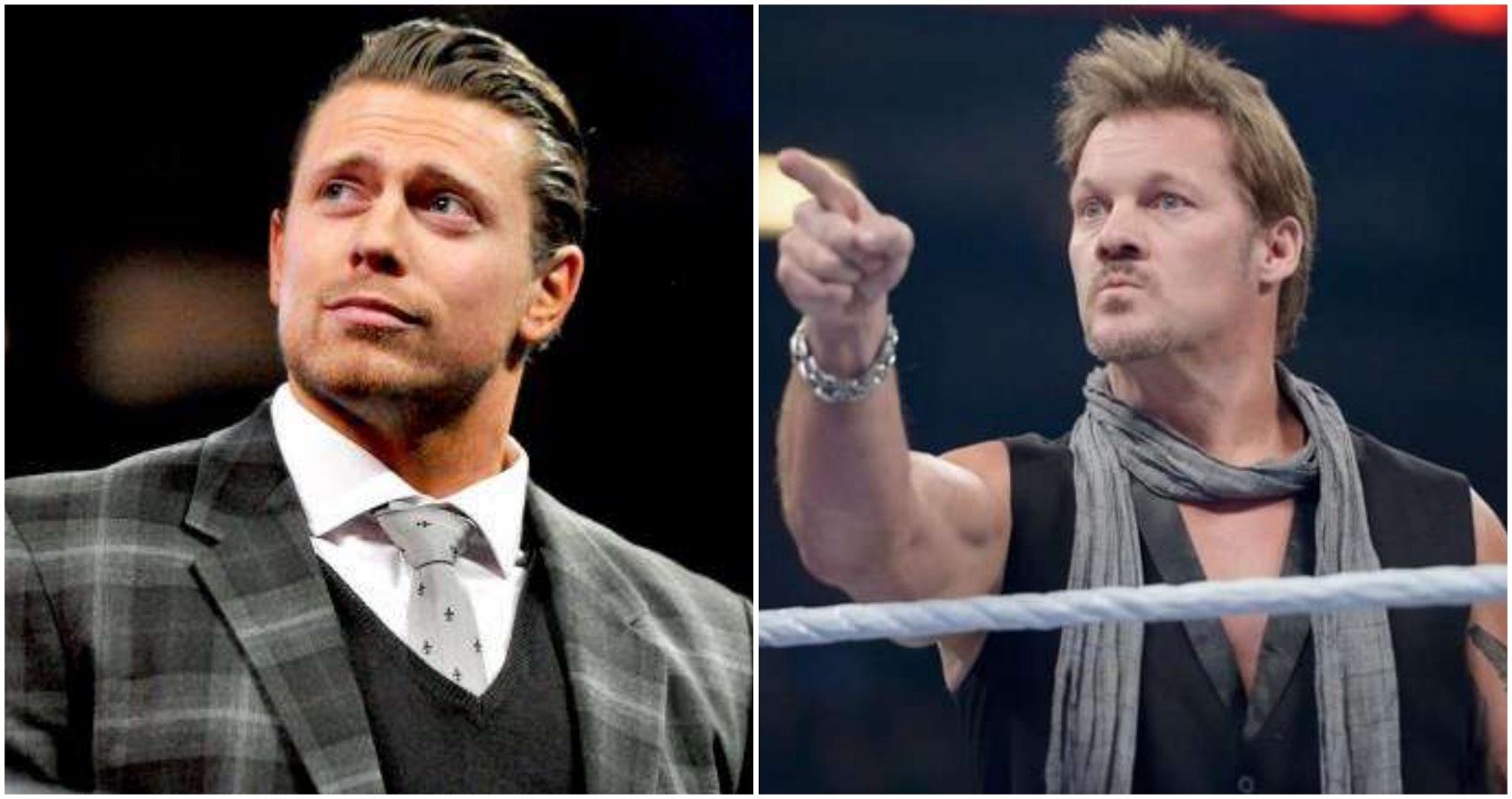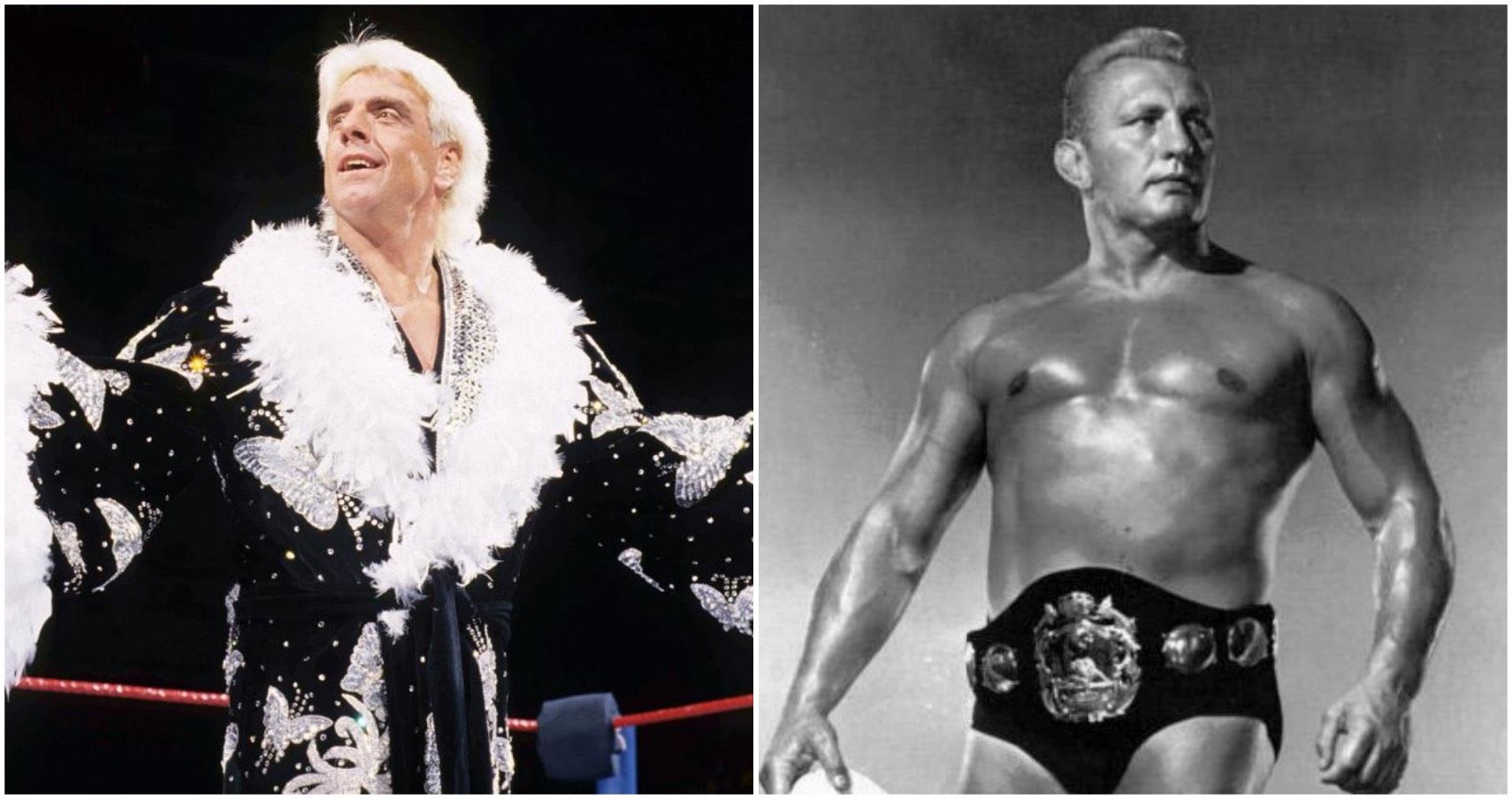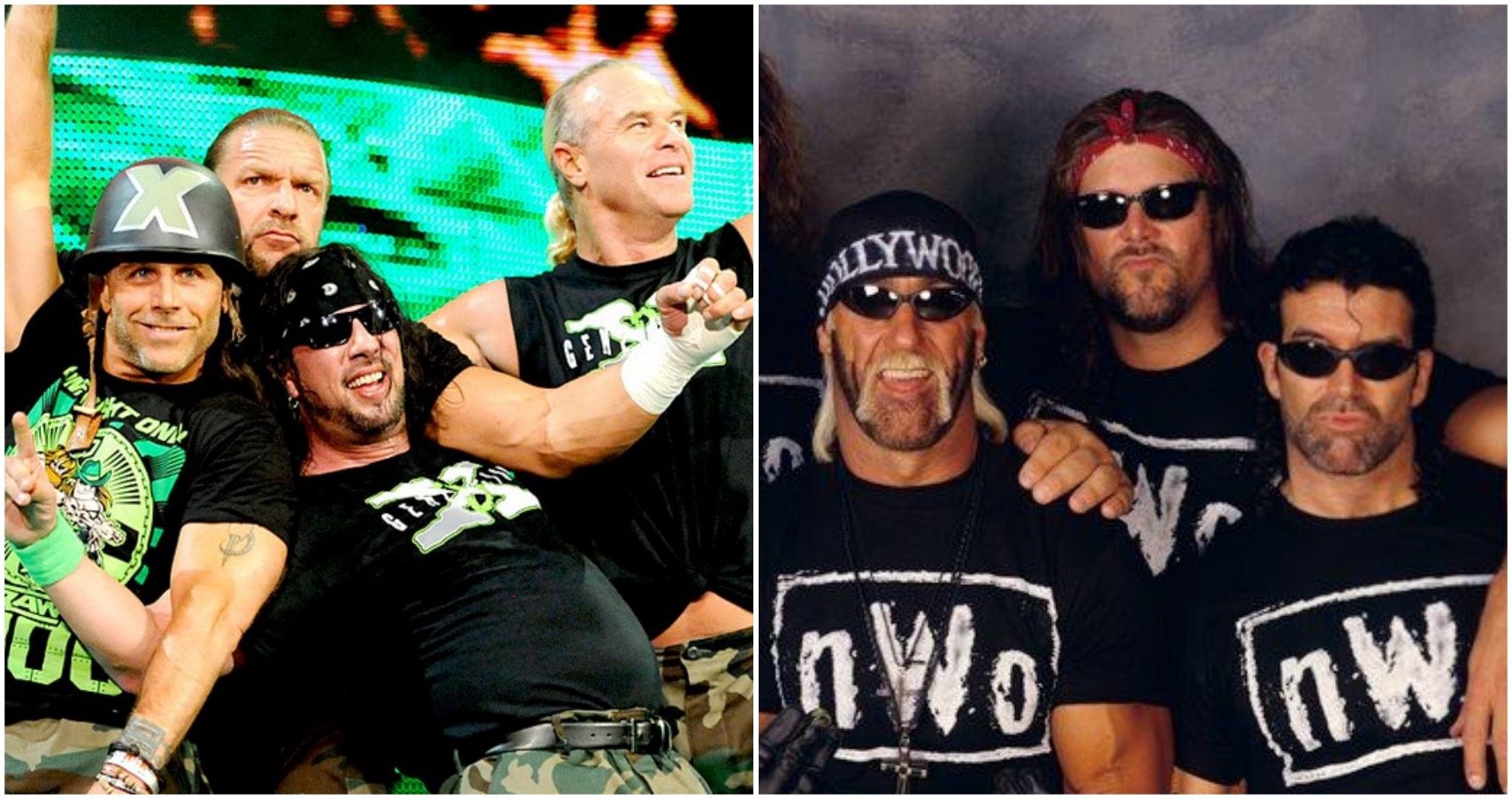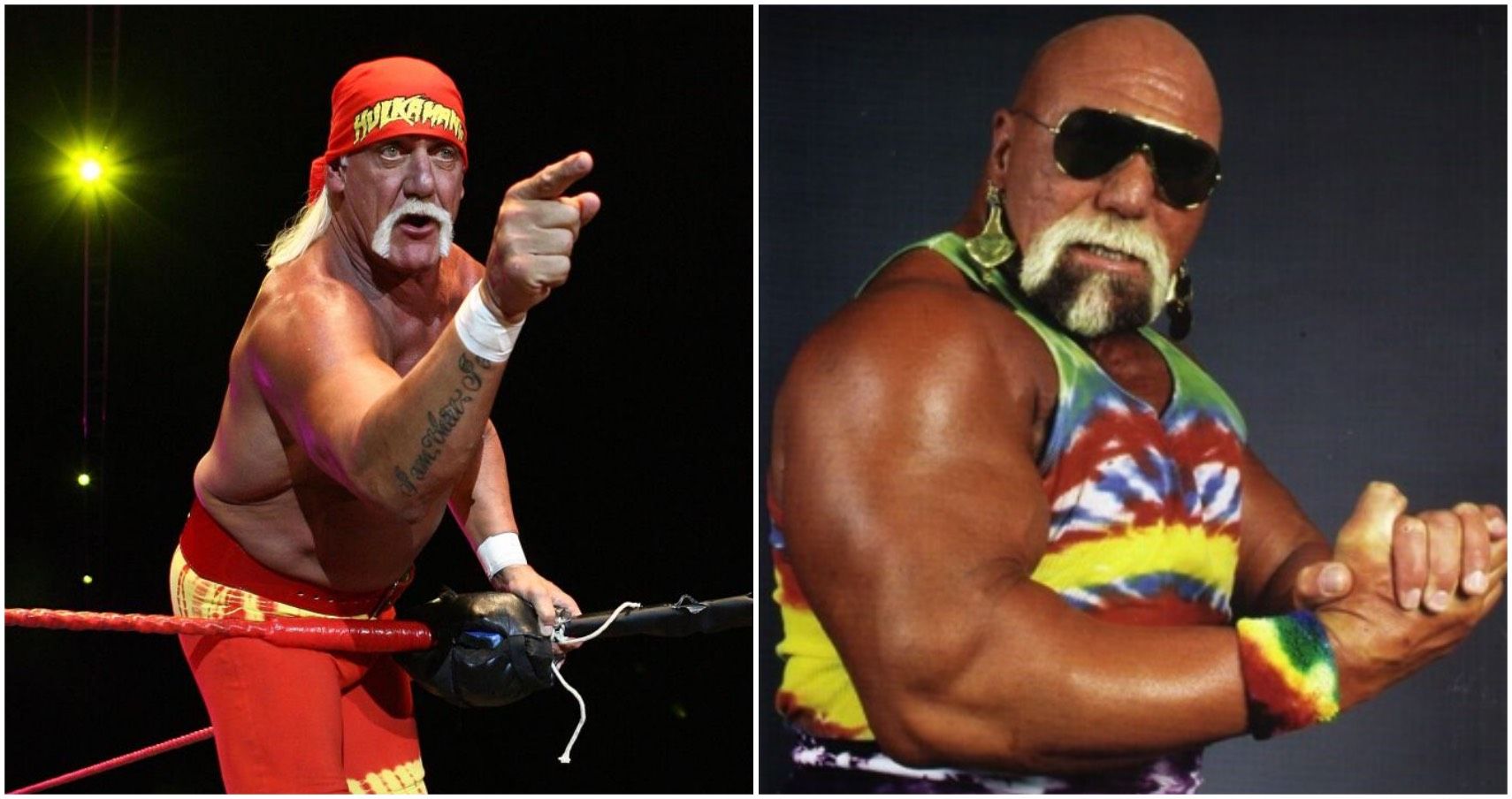As is common knowledge at this point, wrestling is a derivative industry at its core. Concepts and gimmicks are reused on an annual basis, and when it's done well, it can spark interesting angles and garner fan interest. Conversely, when it's done poorly, there's no shortage of things that can go wrong. Without question, a delicate balance has to be employed when reusing gimmicks, and WWE has done this over the years with varying quality and results. There have been gimmick-successes and utter disasters alike throughout every era of the company.
However, due to the age of the viewer, or the well-concealed nature of the gimmick in play, some fans don't realize that these recycled gimmicks are actually a retread of a past character. This is the best-case scenario for WWE, because it allows them to copy, while avoiding any of the potential criticism thrown against them for the decision to do so. It happens more often than you might think, so let's take a look at some of the most notable character ripoffs in the history of the company.
Ranked below are 20 WWE gimmicks you never realized were stolen.
20 20. King Booker From Harley Race
A far cry from most of Booker's career where he was either one-half of The Harlem Heat, or a street-tough singles competitor, the royalty gimmick has been done ad-nauseam in wrestling history. This was merely another adaptation of it, and along with his valet/real-life wife Sharmell, it channeled the version Harley Race portrayed in the late-80s with The Fabulous Moolah as his manager. The first thought would obviously be Jerry Lawler, but he was infinitely more snarky and histrionic than Booker was.
Obviously, this was the tail-end of Booker's career, and was hardly his best work, all things considered. For a filler character on a wrestler that was about to retire, there was nothing wrong with it at all.
19 19. Val Venis From Rick Rude
It was never explicitly stated that Rude was portraying an adult film star from his gimmick in the '80s and early-'90s, but by reading between the lines you'd easily be able to see it. Fast forward to The Attitude Era, and playing such a character was actually encouraged. Venis was one of the era's most popular wrestlers, and actually stayed with the company for quite a long time.
Venis put a modern twist on an older-type of the character Rude was portraying a decade prior.
It worked extremely well for the times, and he didn't have to hide under a disguise of anything else, because obviously at that time, WWE was embracing an edgier image to begin with.
18 18. Carlito From Razor Ramon
Scott Hall wasn't a native Cuban, but he did portray one as Razor Ramon, and gave WWE the impetus to use the Carlito gimmick for someone who was, at least, of Hispanic descent. It was obvious to some, but not to others, considering how far removed the two applications of the gimmicks were from each other. Nonetheless, this one worked out better than some would have expected.
Carlito's swagger and demeanor mirrored Hall's almost to a tee, but being a descendent of Puerto Rico's famous Colon family, he was given a pass on it from most fans.
It was a savvy move from WWE at the time, and they were able to parlay it into having a quality mid-carder for many years on the roster.
17 17. Muhammed Hassan From The Iron Sheik
WWE's penchant for patriotic angles and storylines has shown itself throughout the years, and they went full-bore once again with the Hassan gimmick. It portrayed all the mannerisms and traits of the Iron Sheik's gimmick from the '80s, with all of the anti-American sentiment fit to put on the show.
Hassan even used the Camel Clutch as his finisher, for an extra dose of nostalgia.
It was probably an ill-advised move that didn't need to be seen several decades after it initially happened. The whole terrorist sentiment in the storyline was probably pushing the envelope a little too far for the time in a post-9/11 world, and exploiting something that didn't need to be brought to light yet again. Not one of WWE's better decisions, but they quickly wrote the character off TV when the criticisms became too great.
16 16. Chris Masters From Lex Luger
Most fans remember Luger's time in WWE with his All-American getup, and his consistent vying for the WWE Title, before making the switch to WCW. His initial character with the company however was that of "The Narcissist" Lex Luger, which put even more emphasis on his physique and self-infatuation.
Needless to say, when Masters debuted in WWE, he aped just about every hallmark of the gimmick down the precise taunting movements.
This version of Luger didn't last very long, so it didn't seem like a wholesale ripoff of any one character. Clearly however, WWE was intent on making a mid-card staple out of Masters, off the character that Luger had built years ago. It didn't channel the same kind of success, and Masters' WWE career is generally looked down upon as a wasted opportunity for a limited overall talent.
15 15. The Headshrinkers From The Wild Samoans
Despite the cosmetic similarities, one of these teams was quite obviously far more influential than the other. The Samoans essentially built the blueprint for a success WWE tag team in the '80s, and The Headshrinkers were nothing more than a mid-card team who management could never seem to get over entirely. This was before the whole Samoan gimmick was reused a dozen times or so, and it was difficult for the audience at the time to connect with.
Ultimately, The Headshrinkers would stick around for a few years as a team before disbanding. Fortunately for Fatu, he would strike gold later as Rikishi, becoming a star in The Attitude Era, which made up for any deficiencies the team initially had. It was a tradeoff that he was most likely content with.
14 14. Braun Strowman From Sid Justice
It's an old formula dating back decades, and the snarling, towering, well-built monster of a wrestling who debuts and attempts to destroy everything in their path is a tried and true formula. Before Brock Lesnar and before Goldberg however, the first modern incarnation 0f this character can be traced back to Sid Justice, who would also later wrestle as Sid Vicious and Sycho Sid. When he came onto the WWE scene in 1991, Justice shattered everything in his path en route to his WrestleMania match with Hulk Hogan the following year.
Short on mic skills, but big on destructibility and raw strength, this character is one of the hallmarks of WWE's history.
A younger fan may not associate Strowman with any of the aforementioned wrestlers, but he's essentially a carbon copy of them.
13 13. Mark Henry From Ken Patera
There actually was a weightlifting Olympian gimmick before Henry debuted in the company, and it belonged to Patera. Like Henry, Patera actually did compete in the Olympics, though he failed to win any medals. Afterwards, he went directly into professional wrestling, and would wrestle in WWE in both the '70s and '80s, over several different stints. He'd be one of the first Intercontinental Champions, and a staple of the company for a long time.
Henry emerged during the beginning of The Attitude Era, and found similar success with his strongman gimmick. Whether he was part of a faction or on his own, he always managed to get over with the crowd, and like Patera, he was able to stick with WWE for a long time, and become one of the most tenured members of the roster.
12 12. American Alpha From The World's Greatest Tag Team
The clean-cut, mat-wrestling and patriotic imagery displayed in Charlie Haas and Shelton Benjamin's partnership were clearly visible in American Alpha if you were willing to see it. Chad Gable and Jason Jordan channeled them like no other team has before, and it was able to get them over with the fans, so they could expand into the second phase of their career with WWE.
The high-energy they provided was akin to TWGTT, especially in their Team Angle phase, which is another piece of common ground between the two teams.
This was a successful retread by WWE, who knew they'd be able to channel a successful tag team from the past without copying them wholesale, and get a new tandem of wrestlers over in the process.
11 11. Rodney Mack From Bad News Brown
While Mack had the advantage of a manager in Teddy Long, something that Brown never did while in WWE, the similarities between the two individual characters were apparent if you looked hard enough. Both were streetwise characters that had a brawling style, and similar overall physiques. Additionally, their career trajectories were similar as well, which all added up to Mack and Brown being nearly one in the same.
The former was far enough removed from the latter, that newer fans may not have picked up on it. Indeed, Brown was never the most popular wrestler in WWE to begin with back in the late-80s. But he was unique, and had his own aura about him. They tried to replicate the same with Mack in the early-2000s, but may have ended up slightly short of a memorable character.
10 10. Smoking Gunns From The Southern Boys
Cowboy-based gimmicks were seemingly everywhere in the '80s and early-'90s. From the singles ranks to tag teams, it was a popular mid-card staple that had a purpose if used correctly. The Southern Boys (Steve Armstrong and Tracy Smothers) were standouts in WCW's tag division for a short amount of time, and the resemblance to the Smoking Gunns just a few years later was uncanny. It's clear that WWE was trying to live up to their competitors.
The Gunns were around for several years in the mid-'90s, but overall, it wasn't the best tag work that WWE had done. Part of the issue was the general incompetence of the tag division of the time period, which inherently lessened the effect the Gunns could have. Of course, this gave Billy Gunn his debut with the company, so it wasn't all bad, as it helped springboard the career of one of the best WWE stars of The Attitude Era.
9 9. Damien Sandow From The Genius
This was a well-timed ripoff on WWE's part. Lanny Poffo (Randy Savage's brother) portrayed The Genius character in the late-'80s WWE landscape, and was a mildly successful mid-card heel, playing an arrogant intellectual who would insult the audience.
WWE knew that most people wouldn't remember this, especially the younger fans watching today, so they slapped nearly the exact same gimmick onto Sandow in 2012.
Sandow's title success was marginal, winning the tag belts once with The Miz, but the gimmick worked well enough in the mid-card realm, which is a necessary part of WWE's roster as a whole. They can credit this as a latter-day success, savvily borrowing from the past, and choosing a gimmick that wasn't so obvious as to blow their cover.
8 8. The Godwinns From Hillbilly Jim
Hillbilly Jim basically set the character for The Godwinns in the mid to late-'80s, becoming a cult figure in WWE during that time. He never won any titles to speak of, but he was consistently entertaining and beloved by the fanbase all the same. A decade later, sporting nearly the same ring attire and characters, The Godwinns had a bit more clout in the tag division, winning the straps on two separate occasions, and even having Jim as their manager during their early days.
The difference between the two was that Jim was always a face, and The Godwinns had the ability to go either way, and did during different periods of time. Either way, they were both slop-bucket-toting, good-time hillbillies who had their place in the company for their respective eras.
7 7. Kevin Thorn From Gangrel
Without the backing of The Brood, Thorn was just a faceless vampire gimmick with none of the wrestling ability to make up for it. WWE tried numerous times to make this guy go over, and nothing worked at all.
They were clearly channeling Gangrel circa The Attitude Era, but Thorn never had the capability to make it work. They did a similar thing with the Mordecai character, and that too fell flat.
This was a period of mid-card hell for WWE, and ideas like this were the reason why. Perhaps if Thorn had a semblance of wrestling talent it could have pulled through, but this was a disaster from the very beginning.
6 6. Demolition From The Road Warriors
WWE knew they had to compete with the biggest tag team in the business at the time, so they disguised a couple of mid-carders as a Road Warriors ripoff team. Lo and behold, it actually worked, and Demolition became the single biggest WWE tag team of the late-80s. Changing the color scheme and going with the construction concept was a good way to mask what they were subconsciously trying to get across.
Of course, once the actual Road Warriors set foot in the company as the Legion of Doom, their value was lessened almost automatically.
A knockoff wasn't going to go over in favor of the real thing, and Demolition slowly dissipated into irrelevance in the early-'90s. They were still a legendary WWE team, but the bulk of the idea was taken from the Road Warriors.
5 5. JBL From Ted DiBiase
Money-hungry heels have played a part in wrestling from the beginning, and WWE's two biggest contributions to this group have been both Bradshaw and DiBiase. Bradshaw's gimmick change into a rich Texan ended up having remarkably similar mannerisms to the "Million Dollar Man" character from the '80s and early-'90s that DiBiase portrayed.
It's a tried and true gimmick for WWE, who excels with eccentric characters like this at their disposal. Even with Bradshaw being a focal point of the tag division for years before this, he was able to transition into the singles ranks as a heel quite easily. Their exteriors may have been slightly different, but the intent of the characters was all the same.
4 4. The Miz From Chris Jericho
Jericho's character, beginning in WCW, was a spin on the traditionally cocky heel, done with a certain flair of exuberance and ridiculousness that was seldom seen up to that point. Needless to say, it was wildly successful for him, especially upon entering the WWE ranks, and about a decade later, The Miz successfully copies the same kind of approach.
Of course, there were subtle differences between the two. For one, The Miz never really looked like Jericho, and had a different wrestling style to boot. But the same general ridiculousness that made Jericho a smash hit on the mic, has pretty much transferred wholesale over to The Miz, who has only improved over the years with this gimmick.
3 3. Ric Flair From Buddy Rogers
The original Nature Boy was squarely entrenched in wrestling's territory-era, and never got the chance at national success because of it. No doubt that his successor in Flair had his own ideas as well, but there's no question that his character was an amped up version of the one Rogers had been playing for years.
Flair made it his own, but the seeds were planted elsewhere.
In actuality, Rogers had a good amount of success for his time, but it was before wrestling's boom period, so much of it has been lost to history at this point. Nevertheless, he should get credit for coming up with the character that would revolutionize the business, and create one of its biggest stars of all-time.
2 2. D-Generation X From The nWo
When WCW unveiled the nWo in 1996, comprised of three of the biggest stars in wrestling, WWE knew they had to counter in some way. When it was abundantly clear that this was going to be the biggest thing the business had seen since the emergence of Hulkamania (with Hulk Hogan himself being part of the nWo), Vince McMahon knew he had to come up with a counter-faction of some kind.
There were many different people and events that spurred on The Attitude Era, but DX was a primary component of it, and it's safe to say that the era as a whole wouldn't have been the same without them. They were the result of a need for an edgier product. What followed was some of the all-time great WWE moments of all-time, and they played a key role in WWE beginning to compete again in the ratings war of the time.
1 1. Hulk Hogan From Superstar Billy Graham
It certainly was no Hulkamania, but Graham's popularity was still at a main event-level in the mid-'70s, and he was a key figure in making the WWE gain popularity in their formative years. Charismatic, enigmatic, and decked out in eye-catching attire, Graham was a wrestling celebrity in his heyday, helping to put WWE on the map.
It's not a coincidence that when the character for Hulk Hogan was created, there were striking visual similarities to that of Graham's.
The mustache and bright colors on top of the muscular physique was certainly premeditated to resemble Graham's character. Hogan had proved in the past that he could get over as a main-eventer without Hulkamania backing him, but this is the move that transformed his career and wrestling as a whole. Graham served as the inspiration, and he was able to capitalize on it.


